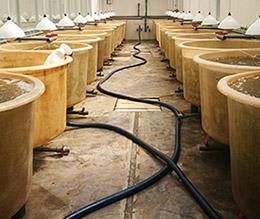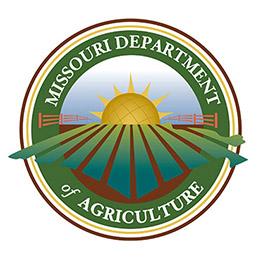Need for sustainable aquaculture
The majority of U.S. seafood supply is imported. Development of cost-effective, environmentally friendly U.S. aquaculture industry offers potential to expand American farm income, while reducing seafood trade deficit of $17 billion/yr. U.S. Seafood imports in 2017 amounted to 6.1 billion lbs. at a value of $22.4 billion. U.S. seafood exports were valued at $5.6 billion driving a trade deficit of $16.8 billion. The vast majority of U.S. seafood export is wild-caught species. U.S aquaculture production is ranked 17th on a global scale, a minor producer. However, the U.S. provides advanced technology and investment capital to producers in many other countries. The major limiting factors to expansion of U.S. aquaculture are water discharge limitations and cost of production. Domestic seafood production industry would offer a safe, healthy alternative to imported seafood products. Expansion of cost-effective, zero-discharge, aquaculture production within the U.S. offers potential for expanding the income base of American farmers. Missouri has an abundance of freshwater resources available to support high-value aquaculture production.
Advances in aquaculture production technology
The "lions share" of U.S. aquaculture production in conducted in open fish ponds in the southern states of Alabama, Mississippi, Arkansas and Louisiana. Earthen ponds are relatively inexpensive and the typical southern growing season of 210-240 days allows economical rearing of market-sized catfish within a single season. However, increasing restrictions on water and waste discharge from aquaculture ponds (in the 1990's) led to a need to improved culture technology. In the 1990's catfish production ponds wee reconfigured into high-rate ponds coupled with raceway fish production as an improved culture technique entitled, "The Partitioned Aquaculture System." The PAS increased pond production from 2,000 lbs fish/acre to 15,000 - 18,000 lb/acre. In Mississippi, the PAS was adapted into existing ponds as "Split-Pond Aquaculture." Split-ponds offered similar fish production at lower installation cost. Split-pond production technology is being installed across the Southern States. Auburn University, Mississippi State University and University of Arkansas all offer videos and training sessions on PAS and SP aquaculture.
Aquaculture in Missouri and the Mid-Central Region
Aquaculture production in Missouri and northern states is emerging, but remains small relative to southern states fish production. The major limitation is a reduced growing season of 180-210 days in southern Missouri, to 150-180 days in central to northern Missouri. Shortened growing seasons render lower-value fish production, such as catfish, economically disadvantageous. The greatest potential for economic success within these climatic zones lies with year round production of higher-valued products (such as shrimp, bass or perch) in climate-controlled, zero-discharge; "super-intensive" culture systems. To date, most private efforts at indoor culture had met with limited success because of the high cost of intensive systems design and operation. For the aquaculture industry to expand in the Midwest, major improvements in cost-effective super intensive systems design and operation is required.
To learn more about different systems, see Aquaculture in the Midwest; Split-Ponds, Intensive Ponds, In-Pond Raceways & Recirculating Systems (PDF)
Aquaculture production intensity
Aquaculture is the production of aquatic plants and animals. Interest in aquaculture has increased partly due to health conscious consumers increasing their consumption of fish and shellfish and the growing interest in local food production. Ponds and lakes can offer aquaculture production providing food and recreational fishing. Low intensity pond aquaculture typically yields 100 to 500 lbs of fish per acre/year in unaerated ponds receiving less than 10-30 lbs of feed per acre/day
Improved aquaculture production is possible in shallow ponds (5-8 ft) employing mechanical aeration increasing fish yields to 1,000 to 5,000 lbs/acre-year with feed addition approaching 100 lbs/acre-day. More intensive aquaculture production is possible in specially designed high-rate ponds employing water mixing and high-energy aeration (10-15 hp/acre) allowing feed application in excess of 200 lb/acre-day. Super-intensive year-round commercial aquaculture is possible in capital-intensive indoor systems allowing for fish or shellfish production in excess of 40,000 lb/acre-yr.
Resources

See aquaculture budgets
Purdue University offers examples of enterprise budgets to serve as guides for planning individual aquaculture operations.

Missouri Department of Agriculture Aquaculture program
Missouri’s Aquaculture Program promotes aquaculture production to customers in both domestic and international markets. See the "Missouri Aquaculture" section.